Nikon Nikkor AF-S 24-70 mm f/2.8E ED VR
4. Image resolution
Let’s check now how the tested lens compares here; its results in the center of the frame are presented below.
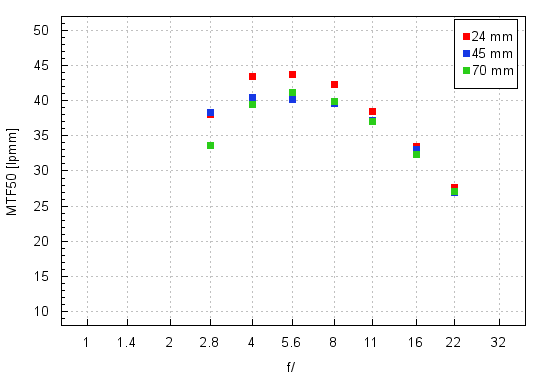
Please Support UsIf you enjoy our reviews and articles, and you want us to continue our work please, support our website by donating through PayPal. The funds are going to be used for paying our editorial team, renting servers, and equipping our testing studio; only that way we will be able to continue providing you interesting content for free. |
- - - - - - - - - - - - - - - - - - - - - - - - - - - - - - - - - - - - - - - - - - - - - - - -
The best values you see at the shortest focal length. Already at the maximum relative aperture the MTFs of the lens are able to get to a very high level of 38 lpmm and on stopping down they increase further to 44 lpmm. It is a very good performance. At longer focal lengths, though, you see weaker results but it should be emphasized that the image quality at the maximum relative aperture is good in all cases and, on stopping down, the lens doesn’t have any problems with exceeding a rather high level of 40 lpmm.
Is this performance better or worse than in the case of its predecessor? That lens we tested on the Nikon D200 but, fortunately, the MTFs produced by that body and expressed in lpmm correspond with the values from the D3x so a lens tested on both bodies produces roughly the same results, not differing by more than 1-2 lpmm.
A comparison between the new and the old model is not favourable for the former. The performance of the older Nikkor 24-70 mm at the shortest focal length was brilliant indeed but also at longer end of focal range it was distinctively better near the maximum relative aperture than the performance of the new lens.
Sad but true: buying the new Nikkor you lose rather than gain when it comes to the resolution in the frame centre…
Now let’s check how it fares on the edge of the APS-C/DX sensor – an appropriate graph you can find below.
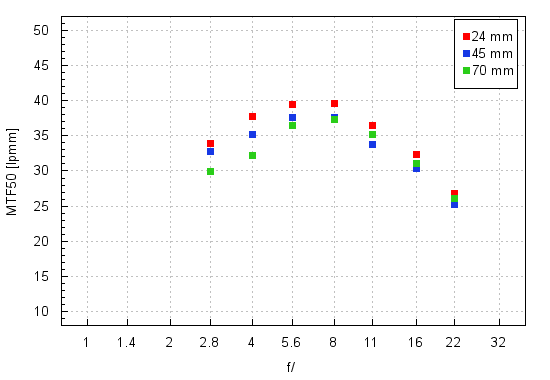
Like in the frame centre, it would be difficult to find any weak points. Already at the maximum relative aperture the image is useful across the whole focal range. On stopping down the aperture to f/4.0-5.6 its quality even increases, becoming very good.
This time the new lens compares favourably to the old one. The previous model had huge problems with providing a useful image near f/2.8 and if you wanted to get acceptable MTFs it had to be closed down to more than f/4.0.
Now it’s time to assess the performance on the edge of the full frame – the graph below shows appropriate results.
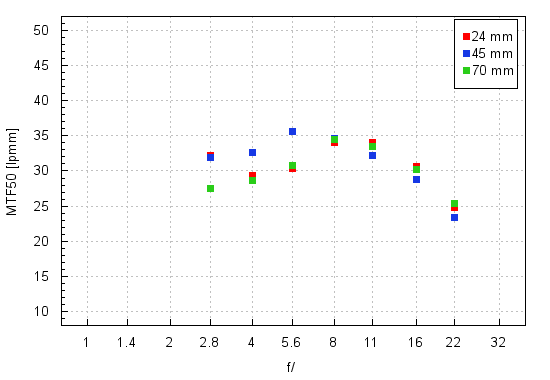
The middle of the focal range looks the nicest – even at the maximum relative aperture we have no reservations whatsoever. The maximum focal length needs a stopping down to near f/4.5 in order to provide an acceptable image. The performance at the shortest focal length is very interesting indeed: by f/2.8 the MTFs exceed 30 lpmm, then their level decrease and from f/5.6 it increases again. It is not a matter of the measuring error of a kind – that effect was visible for all testing charts used in our tests and with the lens positioned in different distances from the target. It seems very specific values of off-axis aberrations, mainly the lateral chromatic aberration and astigmatism, are responsible for such untypical results.
Despite that interesting effect, the performance on the very edge of full frame should be assessed positively. After all also the expensive Canon EF 24-70 mm f/2.8L II USM by f/2.8 didn’t manage to reach the decency level at any focal length in that place.
To sum up, the optics specialists constructing the new Nikkor focused on balancing the results across the whole frame. There are no records in the centre; in fact the new lens fares there weaker than its predecessor and some of its rivals. Still its performance should be considered as very good: on the edge of the frame the results are really impressive, especially if you compare them to those produced by most of its competitors.
At the end of this chapter traditionally we present crops taken from photos of our resolution testing chart. They were taken from JPEG files which were saved along RAW files we used in our analysis above.
| Nikon D3x, JPEG, 24 mm, f/4.0 |
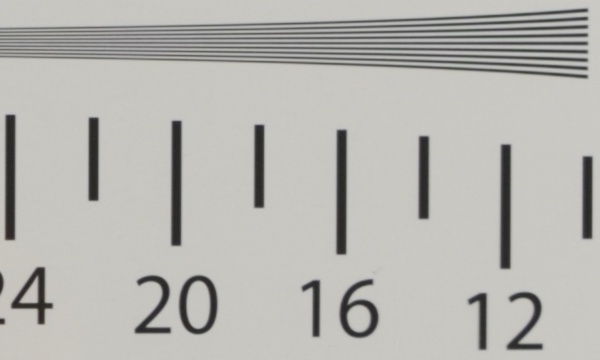 |
| Nikon D3x, JPEG, 70 mm, f/2.9 |
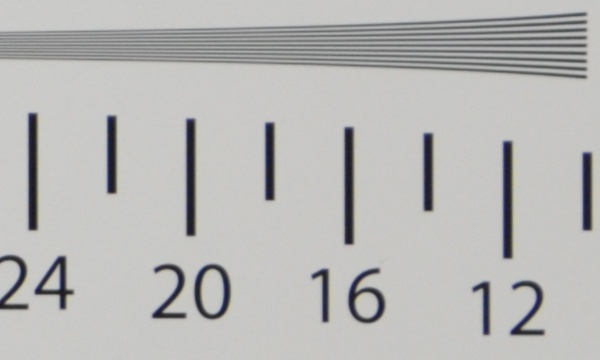 |






